December, 2012
...now browsing by month
Sunday, December 30th, 2012
Whilst having a tidying up session at home I came across some images that I’ve been searching for for quite a while. These are very special images for me because one of them is the only 10×8 Polaroid that I own and two of them are the only 10×8 transparencies that I currently own. It’s hard to explain how amazing it is to view transparencies on a light box and even harder to explain how mind blowing 10×8 transparencies are to look at.
The first image below is from late 1990 when I was an assistant in a commercial photography studio. Sometimes in between working on advertising jobs we would set up portfolio shots. Also working at the studio was a very talented artist and photographer named Benedict Campbell and it’s his handiwork that you’re looking at. If you look closer at this shot you might notice that my left hand is touching the top of a real car – a Fiat that we had hired especially for this shot. We painted the side of the Fiat facing the camera with peelable paint (after we had taped all of the gaps and joints) and then Ben painted the Ferrari on the side and the background too. The front and back of the Ferrari is painted on the background which was a huge stretched canvas flat on rollers behind the Fiat. It was all done in perspective from the angle of view seen by the camera lens. We worked all day and into the early hours of the morning to finish this before we cleaned the car off to return it.
The shot of the motorcycle is another test shot by Ben, this time from 1988 or 1989, I can’t quite remember. The sky in the background was painted by him directly on the studio wall. There was a huge cove at the studio which is where there are no hard corners where the floor and ceiling meet the walls, it was all curved plaster. Ben would often paint moody sky backgrounds whether it was stormy clouds or colourful sunsets. I wish I had done more behind the scenes photography during my time there.
Before digital cameras the main way of checking lighting for a shot was to shoot a Polaroid. The last shot below is a 10×8 Polaroid which I had written 1st March 1991 on the back. This was an advertising shot for Rover cars who were a big client of the studio. This was a shot done by the photographer I worked for, Ian Fraser, and sadly this is the only 10×8 Polaroid that I kept out of the hundreds that we must have thrown away during my time at the studio. The reflections in the side of the car that look like a horizon line of mountains was all done by stapling huge lengths of black velvet to the walls of the studio. The lighting is all reflected light bounced from the cove, coming from big Hollywood movie studio style tungsten lights. It was nothing to have anywhere between 10 and 20 lights for a setup. These were the days of getting everything right in camera instead of ‘fixing it later’ with Photoshop. It was very time consuming and labour intensive but also very satisfying when you got it right.
One of the exciting things about finding these images is that 20+ years later I am looking at the original film that came from the camera. These are one off originals, photographic memories. All this time later I am now using the exact same 10×8 Wista camera (generously on loan from Ian Fraser) to make more photographic memories of my own. I’ve got some Fuji transparency film in my freezer waiting to be used. Long live film!
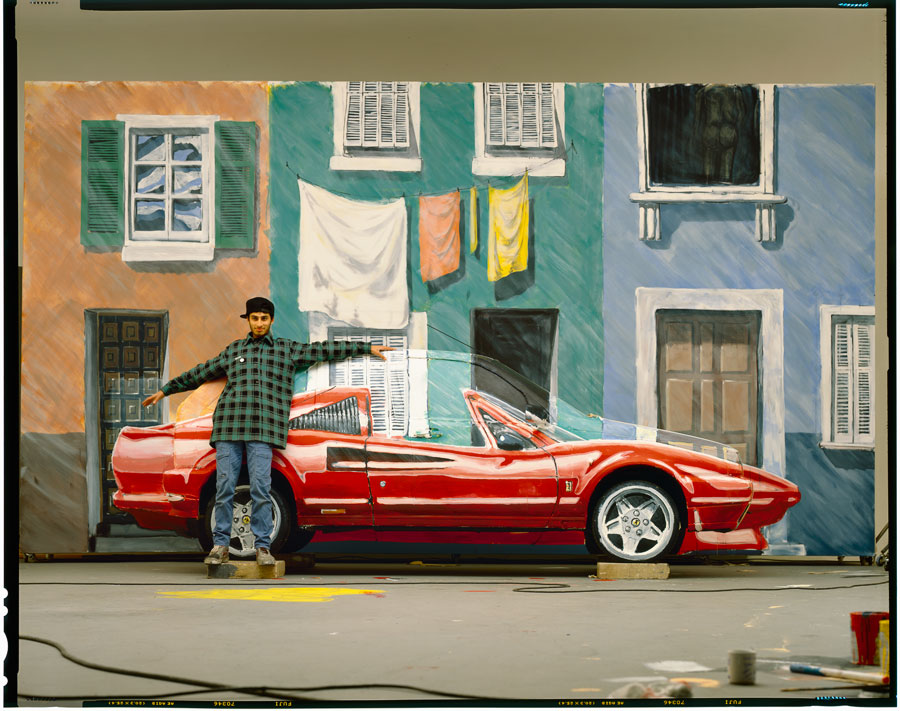
Ferrari vs Fiat. (Photo: Benedict Campbell 1990).
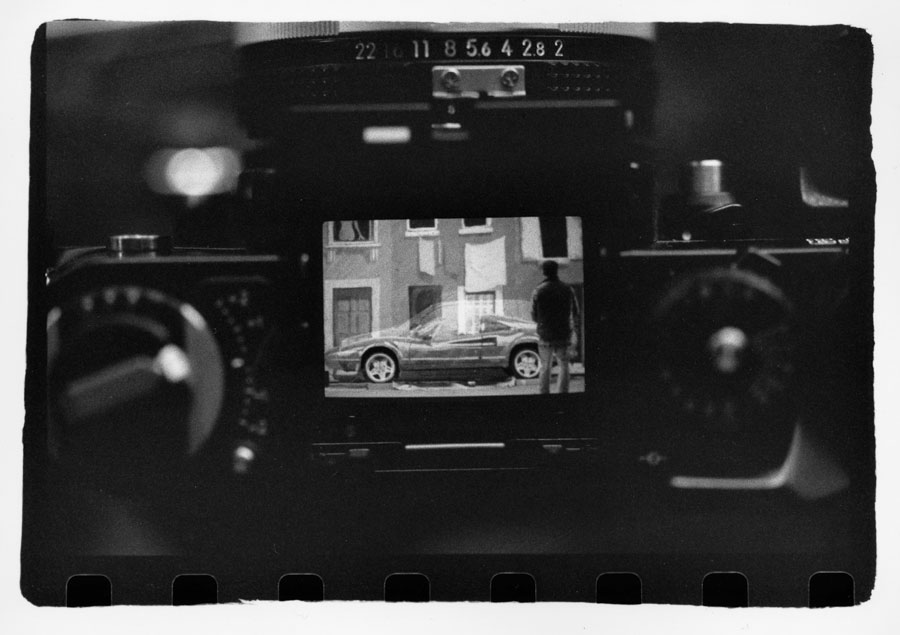
The view through a Nikon F3 of Benedict Campbell at work on the Ferrari shot.

Kawasaki

10x8 Polaroid, 1st March 1990. Rover cars advertising shoot. (Photo: Ian Fraser).
Posted in film, Oxford, Still life | 3 Responses »
Tags: 10x8, campbell, ferrari, fraser, fuji
Sunday, December 16th, 2012
A friend of mine visited Oxford for a few days so we met up for a photo walk around town. Gerard asked if he could borrow one of my medium format film cameras to use on the walk so I decided to let him try out a Mamiya C330f twin lens reflex (TLR). Needless to say we attracted some attention and we even overheard someone referring to the TLR as a 3D camera!
I shot a roll of film through my SL66 and below is every single frame from the roll, all 12 of them. A few of the portraits of Gerard were made with an old 127mm Graflex lens from my Speed Graphic 5×4 camera with me free-lensing.
[Tech info:] Rolleiflex SL66, 80mm Zeiss lens, Kodak Tri-X film processed in Kodak HC110 (B).

Posted in film, Oxford, Street portraits | No Responses »
Tags: 6x6, black&white, c330, film, gerard, hc110, oxford, SL66, Tri-X
Monday, December 10th, 2012
Some images from a lunch hour photo walk back in early November. The film was expired Tri-X that I think was dated 2002 which explains the grain and base fogging. I quite like the dated look to these images, there will be more to come from the same roll.
[Tech info:] Bronica ETRSi, 75mm/f2.8 lens, loaded with expired (2002) Kodak Tri-X. Processed in Rodinal (1:100) for 1 hour.
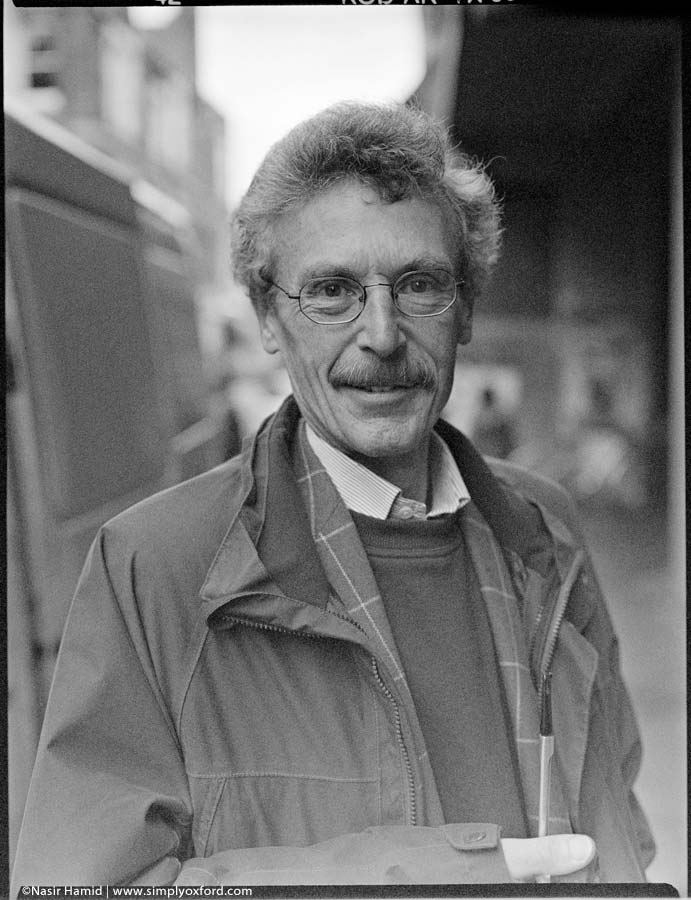
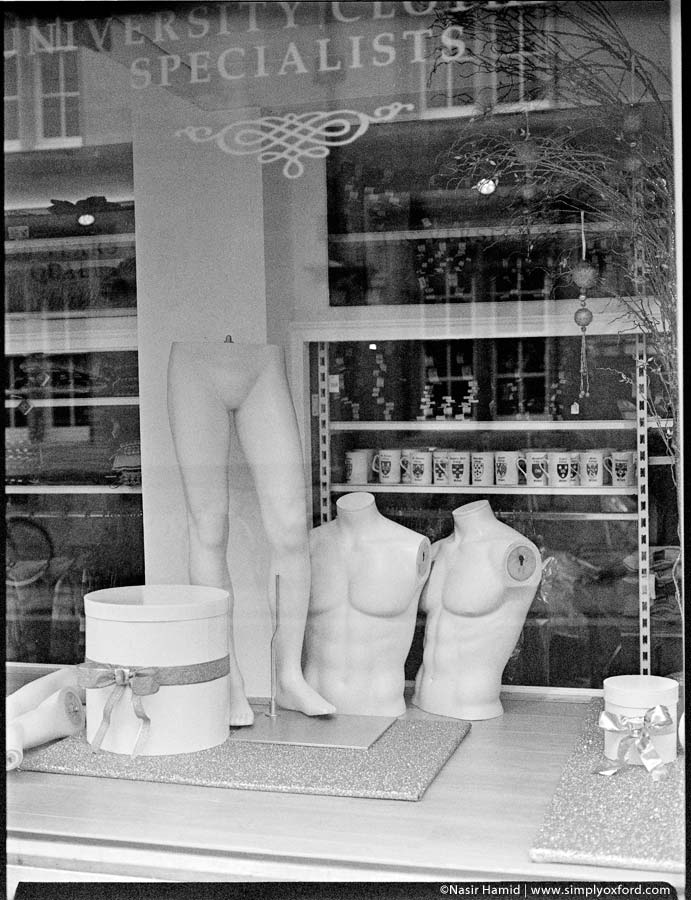
Shop window, Turl St.
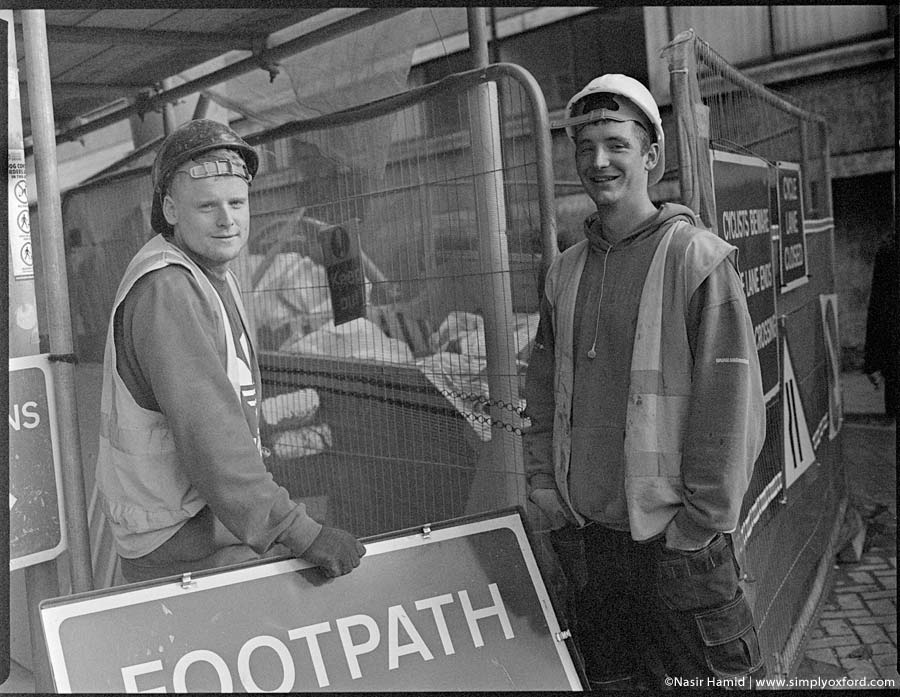
Footpath closed
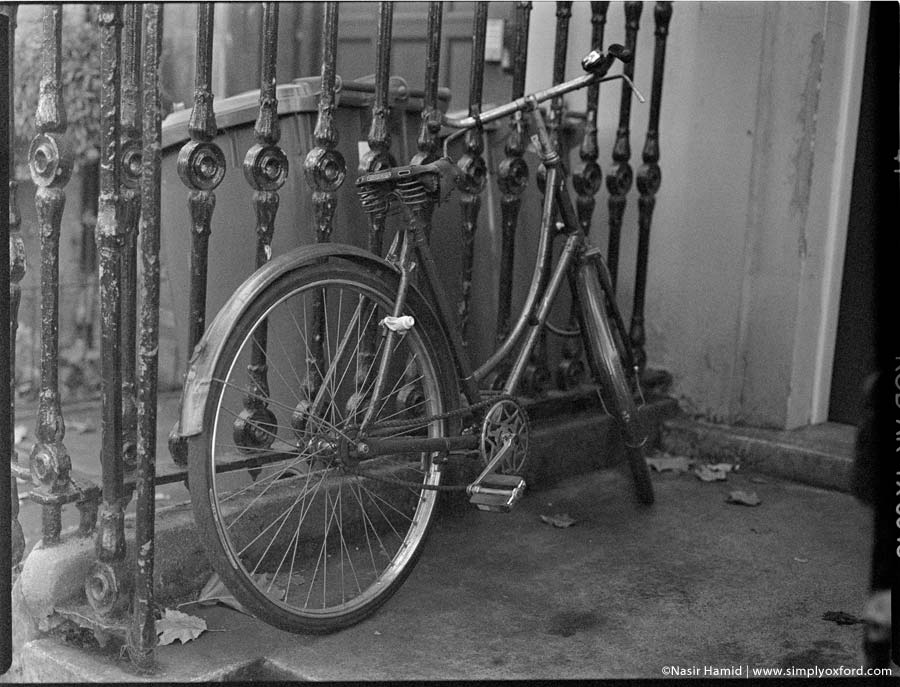
Bicycle, St Giles.
Posted in film, Oxford, People | No Responses »
Tags: 645, black&white, bronica, film, oxford, people, rodinal, semi-stand, Tri-X
Friday, December 7th, 2012
Here are some shots of the cast from a student production of a play called Vagrant that was at the Burton Taylor theatre a couple of weeks ago. The writer/director Alex Darby contacted me to see if I wanted to do some photography of the cast before the performance started so I took the opportunity to test out pushing Kodak TMAX 400 film to ISO1600. I had previously had great results with this film while doing some backstage photography during Oxford Fashion Week but I knew the light in the theatre would be a lot more contrasty so it would be a good test. I’m pleased with the results I got here and the grain is amazingly fine apart from the shadows which is to be expected.
[Tech info:] Mamiya RZ67, 110mm/f2.8 lens, loaded with TMAX 400 (rated @ ISO1600). Processed in Kodak HC110 (1+31) for 7:30.
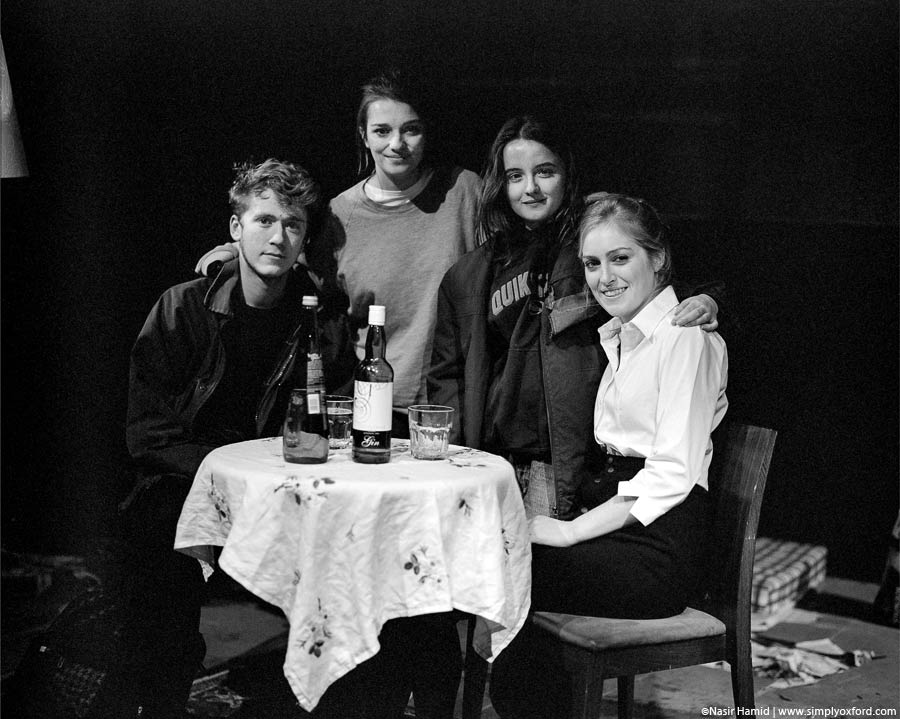
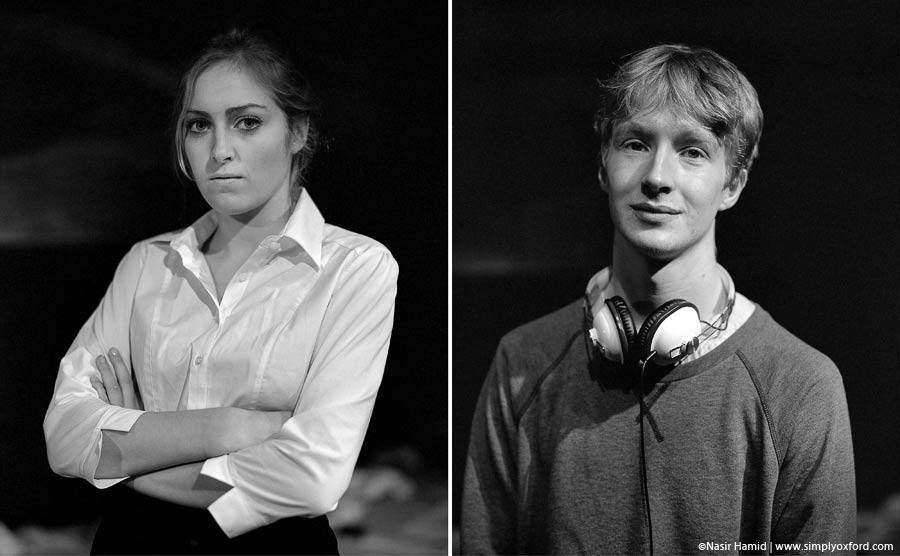


Posted in film, Oxford, Photo shoot, students | No Responses »
Tags: 6x7, backstage, black&white, film, hc110, oxford, portraits, RZ67, students, theatre
Thursday, December 6th, 2012
These images are all from the same roll of film that I shot during a recent lunch break photo shoot I had with Georgina who I first met at the Haute Couture show during Oxford Fashion Week 2012. What’s not apparent here is the amazing colour palette we had in these shots. The light was perfect and after I finished this roll of black & white I shot some images in colour but that roll is still in my camera because I ran out of time to finish it. Georgina was very nice to work with – very relaxed and easy going – and I hope we can collaborate some more after the new University term starts in the new year.
[Tech info:] Bronica ETRSi with 150mm/f3.5 lens loaded with Fuji Acros 100, processed in Kodak HC110 (b) for 5:30.

Posted in film, Oxford, Photo shoot, students | No Responses »
Tags: 645, acros, black&white, bronica, film, georgina, photo shoot, photoshoot, portraits, students
Tuesday, December 4th, 2012
These shots are from a recent photo shoot I had with Adam who you might recognise from some of my shots from the Oxford Fashion Week 2012 Haute Couture show. It was an opportunity for me to test out a new lens that had arrived that morning and also to see how a certain film/developer combination handled very flat overcast light. When I say very flat light I mean extremely dull hard to get inspired horrible light. After starting off in an open area (top and bottom left) we moved under some cover which was a lot better because it gave some light/shadow to work with. I think the shots made during the second half of the shoot are the best and overall I’m pleased with the 150mm lens. Adam was very easy to work with and hopefully we’ll shoot some more in the future in better light and weather.
[Tech info:] Bronica ETRSi, 150mm lens, Fuji Acros 100 film processed in Rodinal 1:100 for 1 hour (semi-stand).
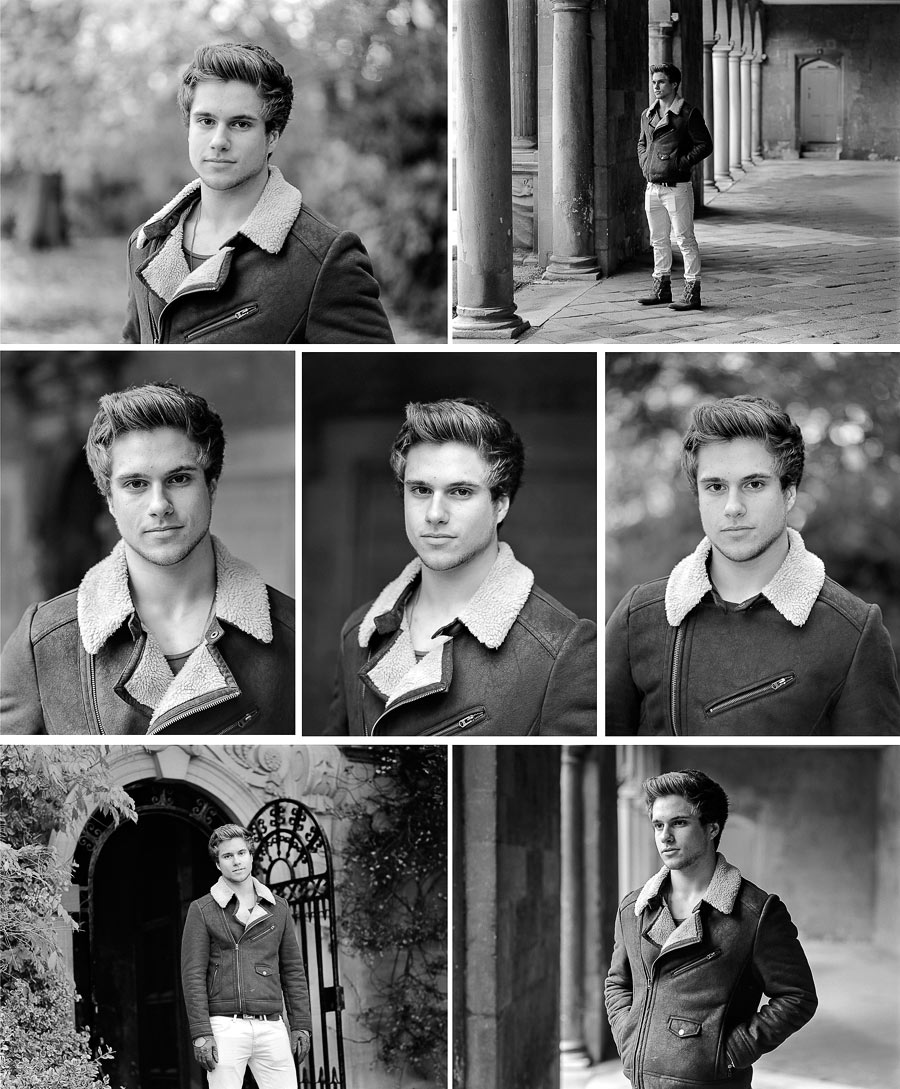
Posted in film, Oxford, Photo shoot, students | 4 Responses »
Tags: 645, adam, black&white, film, portraits, rodinal, semi-stand
Saturday, December 1st, 2012
You might recognise Kristina from some of my Oxford Fashion Week images because that’s where I first met her. I made these shots during a short photo shoot in my lunch break. The light was very flat on a cold overcast day. Kristina’s outfit certainly wouldn’t have been my first choice as being particularly photogenic but sometimes as a photographer you have to work with what you’re given. The light bouncing off of the white jumper was so bright compared to everything else in the scene but the film and processing has kept it under control nicely. I semi-stand developed this film which tends to retain highlight and shadow detail incredibly well.
[Tech info:] Pentax 67, 105mm/f2.4 lens, Kodak Tri-X film processed in Rodinal 1:100 for 1 hour (semi-stand).

Kristina
Posted in film, Oxford, Photo shoot | 5 Responses »
Tags: 6x7, black&white, film, oxford, pentax, rodinal, semi-stand, Tri-X
















